The Battle of the Atlantic saw several fascinating innovations put into large-scale service for the first time. One of these, the Admiralty Operational Intelligence Centre, was an important stage in the development of information-based naval warfare, and formed a critical part of the campaign against Donitz's U-boats.
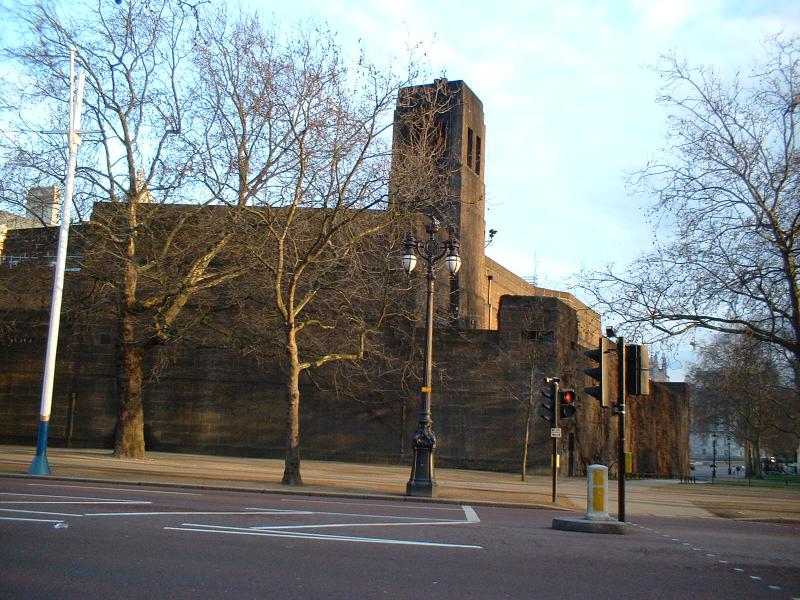
The Admiralty Citadel in London, home to OIC
The OIC had its roots in the concepts developed by Jackie Fisher to synthesize information from multiple sources. These were tested during WWI, where they allowed the British to track German sorties into the North Sea, most prominently at Jutland.
In 1937, Lieutenant-Commander Norman Denning came to the Naval Intelligence Division, and set about putting together an organization charged with handling the data coming in from the Government Code & Cipher School (which relocated to Bletchley Park at the beginning of the war) as well as direction-finding data. He also began to coordinate with Lloyd's, who basically had a monopoly on shipping insurance. Denning's focus on handling data, as opposed to simply collecting it, would make all the difference in the coming war. His organization's excellent performance during the Munich crisis convinced many of its value, and the process of expansion began.
The OIC had originally concentrated on surface ships, but a submarine section was set up in early 1939. I'll focus on its activities in the rest of this post, although it was unable to do much more than plot existing U-boat activity for the first year of the conflict. However, in late 1940, Karl Donitz, commander of the U-boats, began to employ wolfpack tactics, hitting a convoy with multiple U-boats attacking at night on the surface. The main downside to this was that it required more communication, giving Bletchley Park and the direction-finding network more to work with.
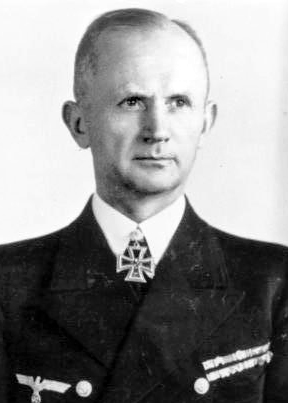
Karl Donitz
This played directly into the hands of Rodger Winn, a former lawyer who was a senior civilian in the U-boat section. Winn believed that he could not only track each U-boat, but also predict what it was going to do next, based on location, history, and signals. Even when codebreaking wasn't working, as was the case for much of the early part of the war, the structure and length of the signals could give a great deal of information to a careful observer. Winn proved his point when he thought that a certain submarine would be headed home based on an intercepted signal. This would put it in position to potentially catch a pair of tankers. One was rerouted and arrived safely, the other was left on the original course, and was sunk. Winn was soon commissioned into the Royal Navy Volunteer Reserve without any training, a completely unprecedented honor.
In early 1942, Winn came to the US to aid in setting up American defenses during the German submarine offensive off the US East Coast. Unfortunately, at this point the Germans changed their codes, cutting off the flow of decrypted U-boat messages until the end of the year.1 However, the code in question only applied to U-boats in the Atlantic. U-boats training in the Baltic and minesweepers continued to use older codes which could be read.2 This information, combined with the knowledge of operational patterns gained during 1941, allowed Winn to patch together a system that enabled the OIC to track U-boats without the benefit of decrypts, essentially making educated guesses about each U-boat that sailed (learning of this from the minesweepers) and updating as information came in from direction-finding and the "flaming datums"3 of attacks.
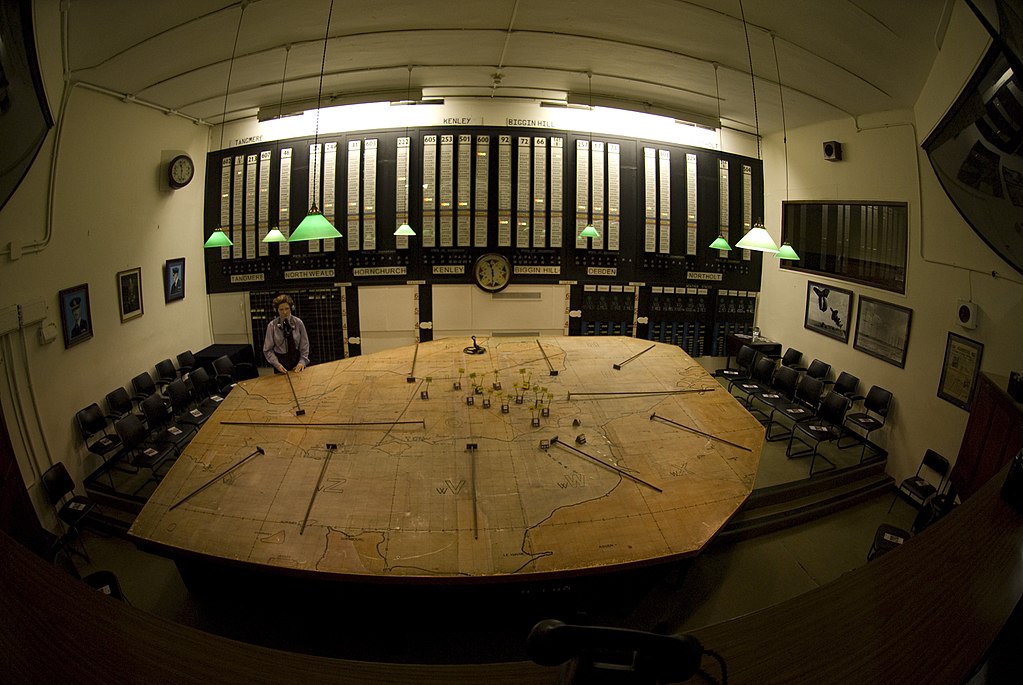
A plotting table4
The resulting "working fiction" proved remarkably accurate, allowing the British to route convoys away from U-boat concentrations, much as they had been able to do when getting decrypted messages from Bletchley Park. Winn and his team kept losses down, even anticipating German moves like deployment of submarines into the South Atlantic, although countering them remained harder. They struggled under the additional handicap that the Germans had broken the convoy routing codes.5 The messages themselves were obfuscated using reference points, but the Germans were able to figure out much of the information.
In December of 1942, when the main U-boat cipher was finally cracked and Bletchley Park was able to resume reading messages, the OIC was able to evaluate the working fiction, and found it to be remarkably accurate. The 160 boats in the North Atlantic were overwhelmingly found to be in the areas they had been plotted in. However, the renewed decrypts were not a panacea. On average, decrypts lagged 24-48 hours behind transmissions, during which time a U-boat could move 320 to 740 nautical miles. While many convoys were routed to safety, others were still attacked, as Donitz had enough U-boats to form extensive patrol lines. The entire North Atlantic quickly became a giant chessboard between the Allied and German control rooms, as each attempted to maneuver its forces to defeat the other.
As the Battle of the Atlantic reached its climax in the first half of 1943, the OIC became increasingly aware of the shift before it showed up in the numbers. Boats were turning back due to mechanical problems with increasing frequency, and the number of kills per boat was falling fast. In February, Winn wrote a paper that described almost exactly how the Germans would react to their worsening situation and under what conditions, although things got worse for them faster than he had anticipated. Many skippers were failing to press their attacks, and an increasing number of convoys sank more U-boats than they lost ships. Finally, on May 24th, Donitz threw in the towel and withdrew from the North Atlantic. Over the previous year, the OIC and its American counterpart had successfully routed about 60% of the convoys clear of the U-boats.
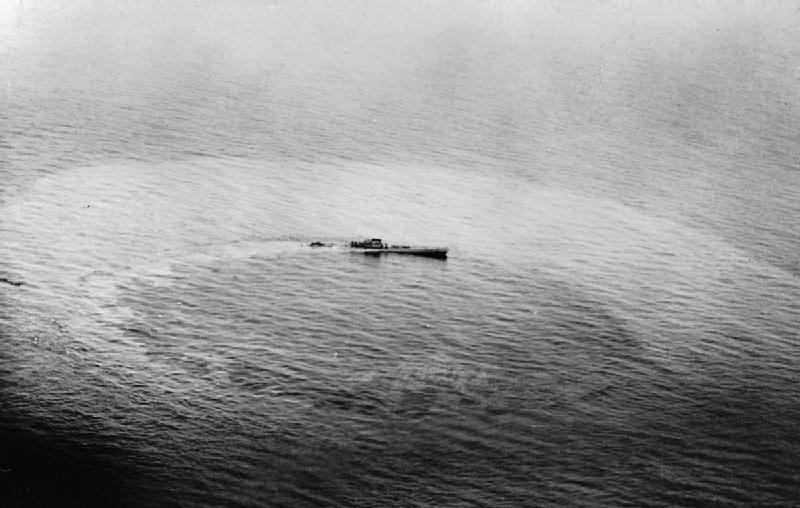
Type XIV U-boat sinking
Unfortunately for Donitz, this gave the allies another opportunity. The majority of his U-boats were quite small, and required refueling to operate in areas like the Central Atlantic, where the escorts were lighter. The tanker U-boats, most notably the purpose-built Type XIVs, were prime targets for the allies, particularly as rendezvous had to be communicated by radio, and the Germans had gotten sloppy. Five were sunk by American forces in July and August, nearly a quarter of the available boats. The OIC was able to detect these changes, as the Germans were forced to pull back their patrols across the entire Central and South Atlantic. The British strengthened their efforts to interdict the Germans traffic across the Bay of Biscay, a subject that deserves a post of its own. OIC was critical to this effort, allowing the hunters to concentrate instead of covering the whole bay.
Donitz tried again in the North Atlantic later in the year, but even improved technology, like an acoustic homing torpedo, failed to turn the tide. Interestingly, decrypts, known as "Special Intelligence", allowed the allies to get a much better evaluation of the torpedo's success than the Germans did, as they had access to the German reports and could also see the results directly.
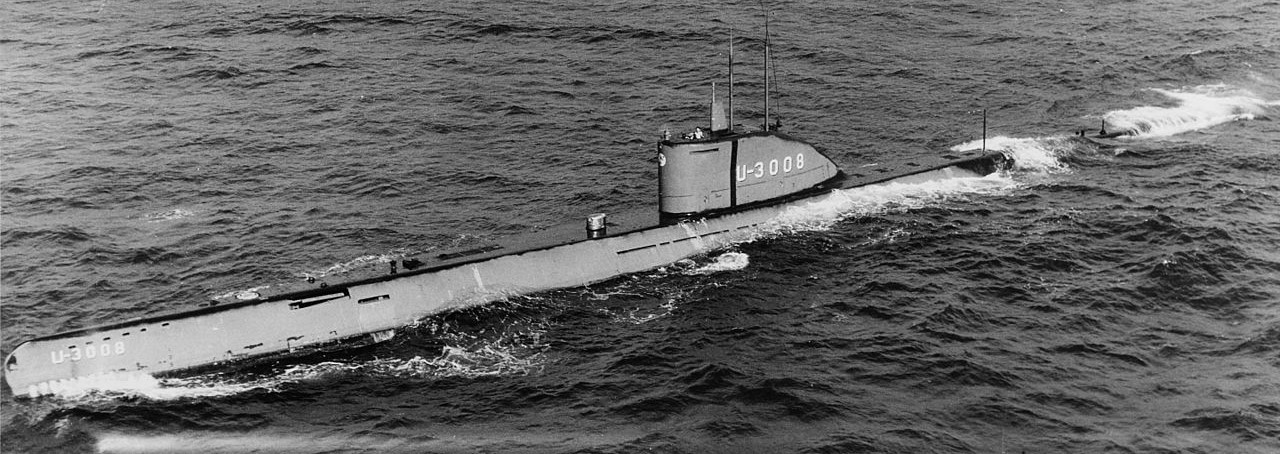
Type XXI Submarine
The OIC continued to support both the battle of the Atlantic and the broader naval war until the end of the conflict. They provided their estimates of minefields in support of the Normandy invasion, and tracked the submarine buildup intended to counter it. The heavy ASW cover provided to the invasion fleet meant that there was no interference from the U-boats. Later on, as advanced U-boats entered service, the OIC allowed the allies to put countermeasures in place ahead of time, keeping the threat manageable.
The methods developed by the OIC were copied across the Atlantic, and ultimately form one of the cornerstones of modern intelligence work around the world.6
1 The Kriegsmarine had by far the most effective COMSEC (communications security) procedures of the three German services. Luftwaffe traffic was read almost continuously, but was of limited use in the Atlantic battle. ⇑
2 Minesweeper codes gave important insights into German operations in both world wars, as lanes had to be swept to allow ships and submarines to go to sea. The British sometimes planted mines deliberately to gain information on German codes and operational procedures. ⇑
3 Or should this be "flaming data"? ⇑
4 This is actually a filter room plotting table from the Dowding system, because there are no pictures of this kind of stuff. ⇑
5 These codes were apparently too weak because the British vastly underestimated the amount of traffic required, partially due to their prewar focus on radio silence. ⇑
6 This post was based on the excellent book Very Special Intelligence by Patrick Beesly, a wartime member of the OIC. ⇑

Comments
If you'd like to see an actual image of the plotting room, see https://www.youtube.com/watch?v=lVWw628Mkac
The Donitz donuts could use some sprinkles.
Could the Germans have won the Battle of the Atlantic if they had done things differently? If they had figured out the Brits had broken their codes, would that have made a huge difference?
@doctorpat
Not quite. The OIC was in the Admiralty, not at Cincwa (Commander-in-chief, Western Approaches). They worked very closely with Max Horton, who was in command there during most of the war, but it wasn’t the same group. That said, thanks for the link. That looks very cool.
Edit:
After watching a couple of minutes, I think he's mixing up a could of different facilities and units. The "how to hunt for U-boats" wargaming, for instance, sounds like it came out of the Operations Research group under Blackett. I'm not sure if they were in Liverpool with Western Approaches or elsewhere, but they certainly weren't in that room. Interesting stuff, though. I'll definitely have to add that to my list of places to visit when I get to the UK.
@Johan
My transliteration policy is that I’m just going to drop umlauts and the like, because it’s easier.
I’m not sure. It was hard for them to win because of the sheer weight of material they were fighting against, and the various pathologies of the German state and industry.
Not necessarily. The British did quite well even when they couldn’t read the German codes, thanks to Winn’s working fiction. Careful intelligence work and use of other information sources goes a long way.
A couple things to keep in mind: first, the British have (maybe) an advantage here, as with air defence, that they've been thinking about this and practicing it for a while, with lots of WW I experience. (Though we might note that the history of trade defence is really scathing about how WW I lessons were not processed systematically -- no published official history, for instance; some stuff did have to be re-learned or re-invented).
Second, while codebreaking gets lots of press, the ability to systematically combine information from a wide variety of sources was critically important. Synthesize information, present the final product in actionable form... it's much much harder than it sounds.
Less than you'd think. A lot of the war-winning innovations only came together after 1935.
Where is this book? It sounds like something I must have.
Agreed. I'd recommend Very Special Intelligence, which does a lot of talking about how codebreaking wasn't everything, and the limitations it had. It's also just an excellent book in general.
Did the Germans do much counterintelligence / decoys / spoofing? I've not heard if they did, but it seems like that would have been the obvious weapon against the "working fiction".
It seems more like they tried radio silence, when increasing the noise to signal ratio might have been a better move.
I don't think so. It's been a while since I looked into this thoroughly (this post was delayed several times for various reasons), but they never quite seem to have understood what they were dealing with. Plus, they relied heavily on tactics that required the U-boats to report back, which they'd have probably abandoned for something more like broadcast control if they really understood how the British were operating.
Also, this kind of data fusion is pretty resistant to simple decoys. For instance, codebreaking probably was able to disentangle real from fake minesweeping orders, which means that they can discount everything from the fakes. Likewise, direction-finding makes it difficult for one boat to pretend to be several, because the British knew how fast it could go and could probably figure out if it was trying to do something clever like that.
I get that totally fooling the British would have been hard to impossible, for a variety of reasons, but padding your messages so that they all have the same length/structure seems like it would be crypto 201 level thing?
There are drawbacks to that, though. This was in the days before easy burst transmissions and computerized encoding and decoding. A longer message is easier to DF, and if you insist on padding everything out to the maximum length you might you, you're wasting valuable time on both ends dealing with the message. It might be possible to ease decrypting by putting in a stop and then random letters/irrelevant words, but I wouldn't be sure the British couldn't detect that at least some of the time.
I guess the question is how they could have done so. Send a fleet of speedboats with radio sets out into the North Atlantic?
That wouldn't work. First, how do you get the speedboats past the British? Submarines can dive to get away from airplanes, but the boats are missing a v in their response. Second, small boats are not good things to be in in the North Atlantic. Third, they don't have the endurance for the job. Very small submarines might work, but I suspect that when the numbers are crunched, it will turn out to be better to just make more of the regular kind.
Followup to the video linked above https://www.youtube.com/watch?v=fVet82IUAqQ is a 40 minute video on the “how to hunt for U-boats” wargaming. He mentions that there is one surviving person who went through the school, but that seeing as that naval officer is now married to the Queen the presenter has not (yet!) been able to get him on the show.
I have Very Special Intelligence; good book.
The trade defence history is The Defeat of Enemy Attack on Shipping, 1939-1945″, one of the naval staff histories.
Longer messages take more time to transmit, especially in Morse code by a human operator. Later in the war the Germans developed burst transmission in an effort to defeat British HF/DF; didn’t entirely work.
The Germans needed long-distance maritime reconaissance, which they didn’t really have (a squadron or so of converted airliners without good training - the Condors --doesn’t really help, plus eventually the British developed ways to shoot them down, most notably catapulting single fighters off the decks of merchantmen.)
Thanks. I'll take a look through it.
And I'm not sure how much maritime reconnaissance would help them. There was no way to make a long-range aircraft that had the performance to survive fighters.
(Link has been fixed.)
In the long run, no: anti-air aircraft will generally be able to take out non-anti-air-aircraft.
In the late 1930s, it would have been very possible for Germany to design and build a long-range aircraft capable of operating out over the ocean beyond fighter range, and probably operating above the ceiling of Fleet Air Arm fighters. (For that matter, just seriously training the Condor crews for maritime reconaissance would have been an improvement over what they did -- Luftwaffe/Kriegsmarine infighting rearing its ugly head again!) The British had carriers, but not enough to assign one to every convoy -- the development of escort carriers eventually proved necessary.
In fairness, it was possible to get above the ceiling of FAA fighters in the late 30s using a ladder. But I do think that some of this is not thinking through how improbable the fall of France was. Before that, German MPAs would have had to fly around Scotland, seriously limiting their operating area and opening them up to attack from long-range British fighters. In that context, I'm not sure buying more Condors makes much sense.
That's what CAM ships are for. Note that in 9 combat launches, they shot down 9 German planes and drove off several others.
If the conquest of France seems unlikely from the perspective of 1938, then so does the neutrality of Spain - and that offers another interesting possibility for basing. Also Norway. But if you're going to assume that Germany, a continental power, can't push past the Low Countries on land, then nothing they can do at sea will win them a war against England and France combined. So they might as well plan on the victories they will need in any event.
And Germany built close to 600 Condors, He-115s, and navalized He-111s. Simply putting those under naval command, and training their crews in joint operations, would have made a huge difference. Having Luftwaffe pilots trying to sink merchant shipping directly, by using the Condor as a low-altitude bomber, was probably the worst possible use of the type, and was still enough to get them labeled the "Scourge of the Atlantic".
If Herman Goering chokes on a chicken bone in 1935, leaving a newbie to fight the interservice battle over Nazi Germany's naval aviation, a German victory in the Battle of the Atlantic looks plausible.
I'll admit to relative ignorance about that part of the Battle of the Atlantic. I'm reasonably familiar with the ASW war throughout, and Morison's accounts are excellent, but this falls into an area I don't have a lot of information on. May need to move the copies of Roskill up on my purchase list, but I just found a copy of the Raven & Roberts cruiser book cheap, so it won't happen that soon.
I'm a bit more skeptical. Only the Condor had the range to actually interfere with the shipping lanes in the North Atlantic. And the improved AA fits on merchant ships by 1941 made what the Condors were doing very, very dangerous. The escort carriers didn't begin to show up until after the Condors had withdrawn from bombing missions. Yes, they could have done better spotting targets for the U-boats, but I still think that you're somewhat too pessimistic about British chances.
The most common variant of the He-115 had a range of 3400 km and 18 hour endurance, compared to 3600 km and 14 hours for the Fw-200. For convoy detection and tracking in the North Atlantic, they should be roughly interchangeable. The hundred or so navalized He-111s couldn't reach beyond the Western Approaches, but that was an important part of the U-boat war for as long as that war could plausibly be won, and an empty -111 could fly high and fast enough to evade any fighter it would be running into in that airspace.
The Condor got all the press because it was the one that could do at least moderately effective and not-completely-suicidal convoy attacks. In London and Berlin both, only kaboom got any credit, which was a perverse incentive because as you note low-altitude bombing of defended convoys was a high-risk, low-reward strategy.
Put all three in the hands of people who share credit for the kills of the U-boats they vector, and who train with those U-boats, and the story should look very different.
This does not match my copy of Warplanes of the Third Reich, which indicated a significantly shorter range for the He-115 than the Fw-200. And the Condor at least suffered pretty badly from long-range fighters. I believe at least a few even fell to Hudsons and the like.
The He 115 looks a lot like a floatplane to me, probably not ideal for long range (where you'd really want a landplane with none of the aerodynamic compromises needed for water landings).
Could aircraft have worked as decoy transmitters?
Probably not. They couldn't make it far enough out to sea to be really useful.
Now that I'm home, I'm looking at "Jane's Fighting Aircraft of WWII", Angelucci et al's "World War II Combat Aircraft", Gunston's "Fighting Aircraft of World War II", and Eden and Moning's "Complete Encyclopedia of World Aircraft". Along with online sources of varying credibility. There seems to be a consensus of 3600+/-100 km for the Fw-200C and 3400+/-100 km for the He-115B. What numbers are you seeing? Also, are you looking instead at the He-115C? That was a later and less numerous variant, trading range for heavier armament. Because only kaboom gets the credit.
I find one loss to a Hudson, of a Condor surprised while attacking a convoy, and one mutual kill with a Liberator.
And while I'd have to buy another book to get a complete list of Condor losses (OK, ordering the book now...) it looks like prior to 1942, the majority came during low-altitude convoy attacks. And not even due to AAA or hot-shot Hudson pilots, but structural failure due to attempting low-altitude maneuvering flight with a long-range commercial airliner.
So, the myth is that Hitler lost WWII because he was given the Me-262 and insisted on turning it into a bomber. The reality may be, that the biggest mistake was taking the 1939 equivalent of the P-3 and turning it into a bomber.
That would be it. It’s the only version with full specs in the book, and it’s credited with 1,740 miles max/1550 normal. It does credit the B version with a maximum range of 2,080, but that’s buried in the text where I didn’t look earlier.
I was going to ask how you came to have that many books, but then I saw the Amazon prices, and I suspect I’ll have them soon, too. What is wrong with the world, that I can pick up all of those for the cost of a typical mid-range naval reference book?
I’d have to do a deep dive into how much of a difference using the Condor in a patrol role would have made before I’d accept that totally, but it’s not implausible. But it’s also possible that an increase in sinkings would have been capped because the Germans were already using their submarines fairly efficiently. But as I’ve said, I don’t have a particularly good account of the early Battle of the Atlantic on hand at the moment to figure out either way.
Edit: Or maybe not. I grabbed a Kindle copy of Business in Great Waters, and in May of 1940, the Condors sunk nearly three times the total shipping the U-boats did, apparently because of problems with their torpedoes. More than that, the Condor’s total that month was higher than U-boat sinkings for any previous month, with the exception of February of 1941. There was a big spike in June, as the torpedo problems were solved and the RN was distracted by the need to evacuate continental Europe. But I don’t think that finding ships to attack was the biggest problem in the second half of 1940, particularly as the U-boats multiplied and could home each other in. Weirdly, in the first month or so after KG40 was under Donitz’s command, the U-boats gave target to the Condors more often than the other way around, and the whole process didn't work out as well as Donitz had hoped. And pretty soon, the improved air cover situation pushed the U-boats out of reach of the Condors altogether.
bean:
Maybe more people buy aviation books and so they don't have to charge as much to make a profit, there may also be more competition among books about aircraft pushing prices down.
The used prices for all of those books are under $5 (I rarely buy new). It's mostly a matter of a larger market for the books new driving down the used price. I understand the economics of it, I just think it's cosmically unfair.
May of 1940 was a decidedly anomalous month, one of only two in the entire war (April 1941 was the other) where the Luftwaffe sank more merchant tonnage than the U-boats. Over the course of the war, the score came to U-boats 14.8 million, Condors et al 2.9 million. In the critical years of 1939-1942, that's 11.0 million to 2.3 million.
Looking at a dozen random patrol logs for Type VIIC U-boats in the North Atlantic (one per month through 1941, avoiding 1940 because of rebasing kerfluffles), I get the average patrol lasting 32 days including 9 days of transit time, and expending 10 out of 14 torpedoes. And eyeballing the maps, it doesn't look like much of that patrol time was spent hustling to attack convoys that other U-boats had called in. That comes to 0.31 torpedo attacks per boat-day.
If we assume proper air-naval cooperation can double the rate at which U-boats can find targets, an average boat should be able to expend 14 torpedoes in 16 days, add 9 days for transit, and 0.56 torpedo attacks per day.
So, even assuming no tactical advantage beyond positioning the boat to make the attack, that's an 80% increase in the operational efficiency of the U-boats, minus 20% for the low-altitude air attacks that are hypothetically not being done.
Assuming proper aerial reconnaissance can find targets for U-boats as fast as the U-boats can find targets for themselves, which seems plausible but I'll wait until the latest book order comes in. But the Battle for the Atlantic was a close enough thing that I wouldn't want to bet on the allies if we give the Nazis a net 60% improvement.
At this point, I have to ask where you found these patrol logs. Because that seems like a source I need.
If it worked that well, I'll agree it would have been worth it. But it seems like it just didn't when they tried it in practice. Donitz did get control of KG40 at one point, and wasn't able to get that much improvement out of it. Yes, it's quite possible that if the Reichsmarine had had the Condors from day 1, they could have done better, but I have a great deal of faith in the ability of the WWII Germans to screw things up.
It isn't just a matter of taking a Luftwaffe KG and giving operational control to Doenitz for a while; maritime reconaissance and proper naval communication are art forms of their own and, like every other combined arms activity, depend heavily on practice and integration. The Kriegsmarine needed an air arm of its own, not units assigned from the Luftwaffe.
@Tony
At this point, it seems like we're comparing an idealized maritime reconnaissance capability with British defenses as they actually existed. The Germans and British both screwed up various aspects of the war, and I don't think that giving Condors to the Kriegsmarine in 1938 would make them immune to that.
I note that the 'net 60% improvement' is holding the British response constant. If the Germans did manage to achieve near-ideal aerial reconnaissance, could the allies have done anything about it?
@ADA
My first guess would be an increase in attempts to drive off the Condors. CAM ships were fairly successful in that role, and the Lockheed Hudson at least had a slight performance edge. Probably enough to at least threaten the Condors, and it's reusable.
Would the paradigm be "CAM ship sees Condor at the same time Condor sees ship, ship launches Hudson, Condor radios home, Hudson chases and kills Condor, Germany unwilling to keep trading one Condor for one merchant ship sighting"?
@ADA
Sort of. First, yes, the Condors were seriously rare. I don't think they ever got more than 50/year, so a serious shootdown rate is going to deplete the fleet rapidly.
Second, the Condor might need to remain the the vicinity of the convoy for a while to be effective. The initial strategy of radioing back the sighting fell victim to bad navigation. (This wasn't uncommon. When the Italians sent out snooper missions in the Med, the British used to listen to their radio transmissions and would leave the snooper unmolested if its position was far enough off.) They switched to the Condor transmitting a radio beacon that the submarines would direction-find on. I suspect that requires the Condor to stick around for a while, and also it has to pass course and speed somehow. (That may have been in the radio beacon, but I don't have details.) The other obvious solution is to jam the beacon, and send out other ships with more jammers to sit in the open ocean and confuse the situation.
Third, the Hudson wouldn't fly off the CAM ship. That would be an old, worn-out Hurricane. The Hudson would operate from a land base, and basically just sit and wait for the Condor to show, then try to drive it off or shoot it down. It might be cheaper than the Hurricanes, although to be fair, it might not be, given that the Hurricane just sits there until it's needed, and that airplanes back then were fairly disposable.